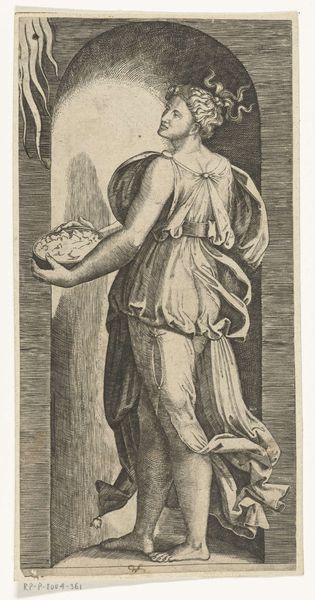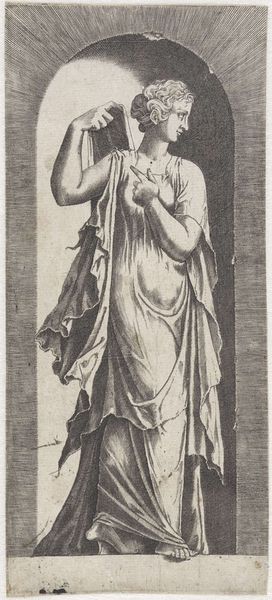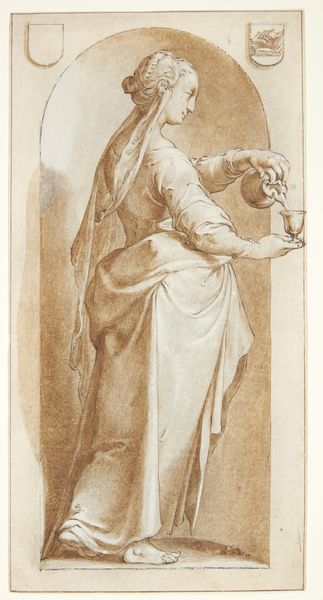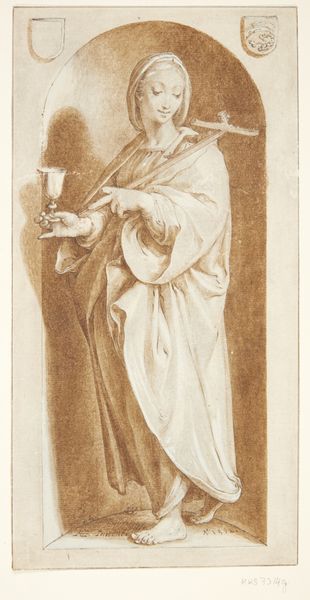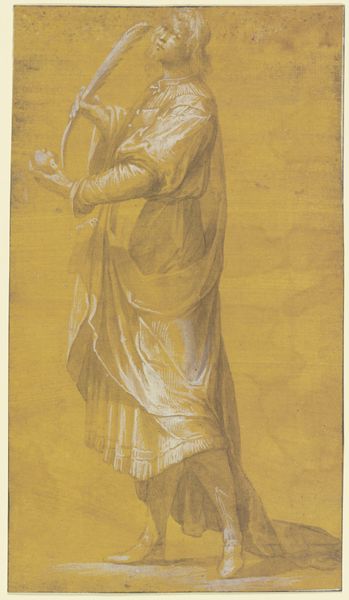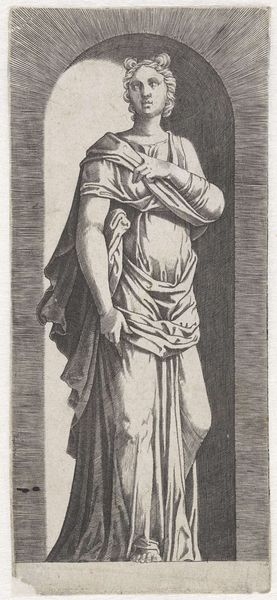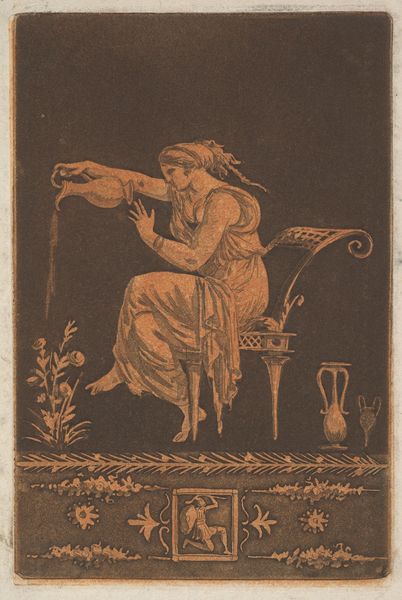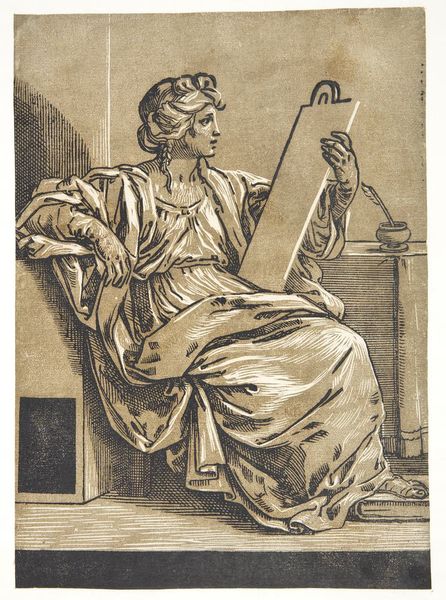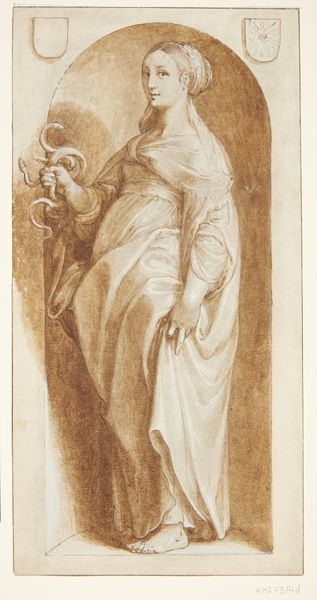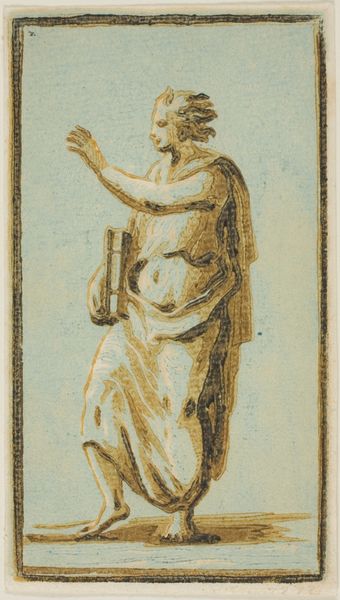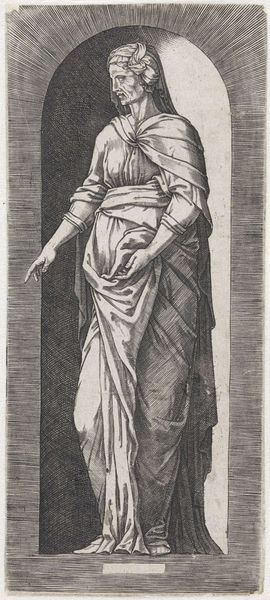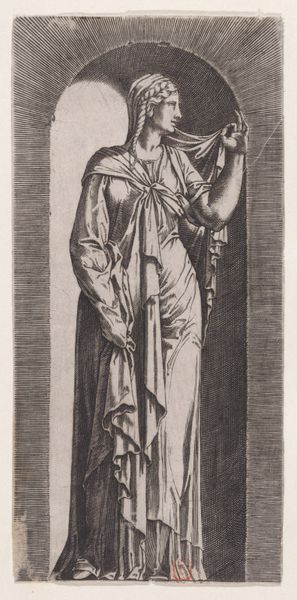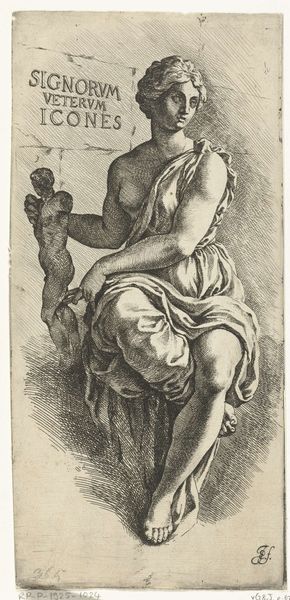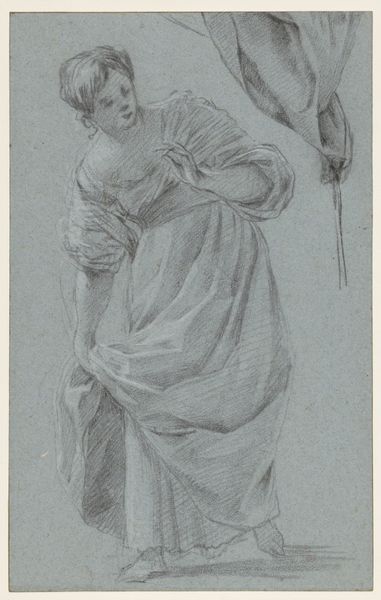
Dimensions: height 285 mm, width 151 mm
Copyright: Rijks Museum: Open Domain
Editor: Here we have "Floating Female Figure Pouring a Cup," made sometime between 1865 and 1923 by Georg Sturm. It looks like it's made from watercolor, and possibly other media. I'm really struck by the drapery of her dress, it has a lovely sheen to it. What do you make of it? Curator: It’s fascinating to consider this piece through the lens of materiality and production. Let's think about the materials used: watercolor, possibly oil and drawing media combined. What implications do these combined materials have for how we read the piece? Editor: Hmm, I hadn't thought about the mix of media, but now that you point it out, it feels like it speaks to a crossing of boundaries. Curator: Exactly. Think about how watercolors, often associated with preparatory sketches or amateur art, are combined with perhaps oil painting, a medium traditionally valued in high art. How does that impact the social standing, the economic accessibility of creating such a work? Editor: I see what you mean. Combining less expensive watercolors with more valuable oils democratizes art production a bit. Did that mean art became more accessible for middle class people in the late 19th, early 20th century? Curator: Precisely. This suggests a shift in the art market, and possibly an aspiration towards wider consumption. Could the image of a classical, ethereal woman be read as a symbol of aspiration within a changing social and economic landscape? Editor: That's interesting, the materiality reflects the shift toward middle class consumerism. Thank you, I have learned to read images more closely considering these aspects! Curator: And I've seen a new level of artistic engagement from you! It is important to examine the tangible elements of the art, their economic implication and what it tells us about the artist's and consumer's position.
Comments
No comments
Be the first to comment and join the conversation on the ultimate creative platform.
